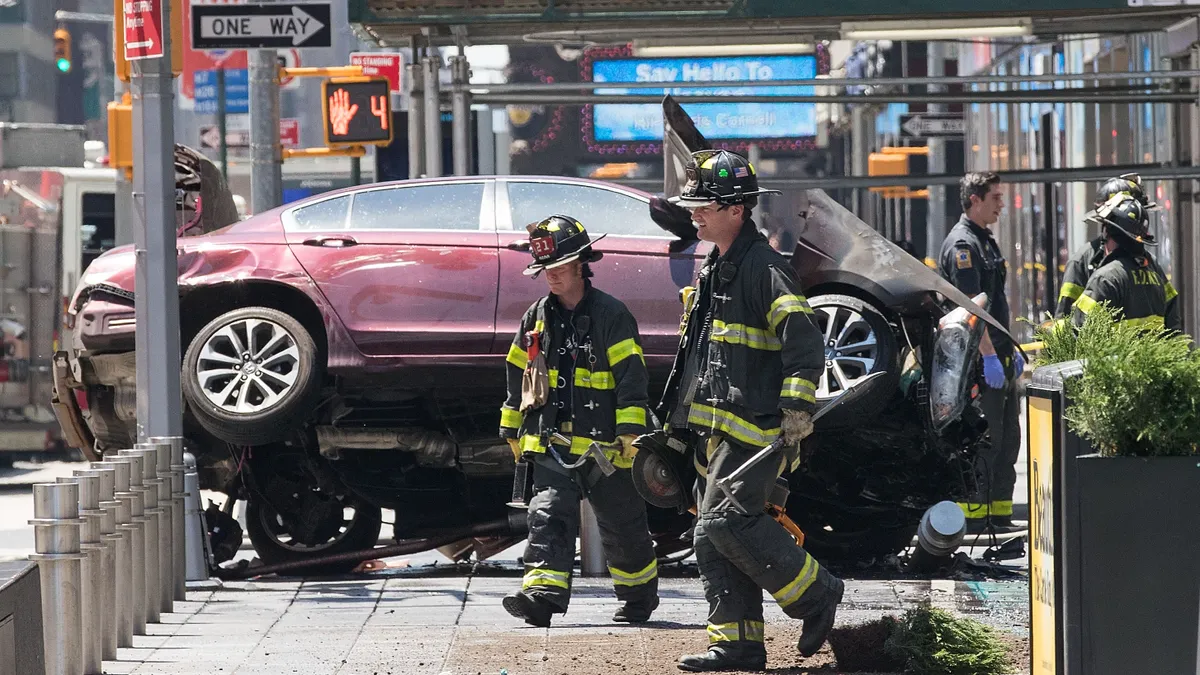Almost 43,000 people died and millions were severely injured in 2021 in the United States due to traffic violence. National, state and municipal governments are now trying to get that number down to zero with the help of funding from the 2021 bipartisan infrastructure law, experts said during a webinar the Mineta Transportation Institute and Commonwealth Club held earlier this month.
But providing more funding for local projects isn’t enough to reduce traffic fatalities, said multiple speakers. According to Jennifer Homendy, chair of the National Transportation Safety Board, government leaders must champion public transit and increase safety for all road users, especially the most vulnerable. Current vehicle regulations prioritize the safety of people inside the vehicle rather than the safety of people outside it, she noted.
“I believe the infrastructure law alone isn't going to get us to zero. And that is because it perpetuates our nation's bias for cars,” Homendy said. “I do fear that we risk missing this once-in-a-generation opportunity to stem the outrageous — and it is outrageous — public health crisis on U.S. roads.”
Traffic violence affects nearly one in five U.S. residents. According to the annual MTI survey, presented by Asha Weinstein Agrawal, 17% of adults surveyed were in a motor vehicle crash, and 9% had been moderately or severely injured in a crash, within the previous year. In 2021, pedestrian fatalities increased 13% from 2020, totaling 7,388.
States must spend 15% of their Highway Safety Improvement Program funds on safety improvements for pedestrians and bicyclists, but only if fatalities of those road users are at least 15% of the traffic fatalities in the state. Beth Osborne, vice president for transportation and thriving communities at Smart Growth America, pointed out that 15% is a tiny fraction the federal funding states receive to improve highway safety, and if pedestrian and bicyclist fatalities are only 14% of the total, states are not required to spend any money on it at all.
“We now have a minority of the minority of the minority of funding that's guaranteed to vulnerable users once states perform poorly enough,” she said. “But all the rest of their money can go to create more problems that need to be fixed by these little bitty programs in the future.”
As part of the bipartisan infrastructure law, the federal government is funding an additional $5 billion in local projects that increase roadway safety through its Safe Streets and Roads for All program. So far, the Transportation Department has allocated $800 million of that total.
“Almost every state in the nation has benefited from this, and it is a good example of the federal government working in partnership with local governments to tackle their most challenging issues on roadway safety and to plan ahead,” said Robin Hutcheson, administrator of the Federal Motor Carrier Safety Administration.
Even with the $5 billion for local projects, many cities may get left behind, said Ravinder Bhalla, mayor of Hoboken, New Jersey. Hoboken has achieved six years of zero traffic deaths since implementing a Vision Zero initiative. However, the city’s application for the first round of Safe Streets and Roads for All grant money was denied.
Getting to zero will take more than just more funding, Bhalla said — city leaders also need to “cultivate and nurture a culture of safety.”
“The [bipartisan infrastructure law] is not a cure-all or a silver bullet,” he said. “To solve this problem, it's got to start at the local level.”










